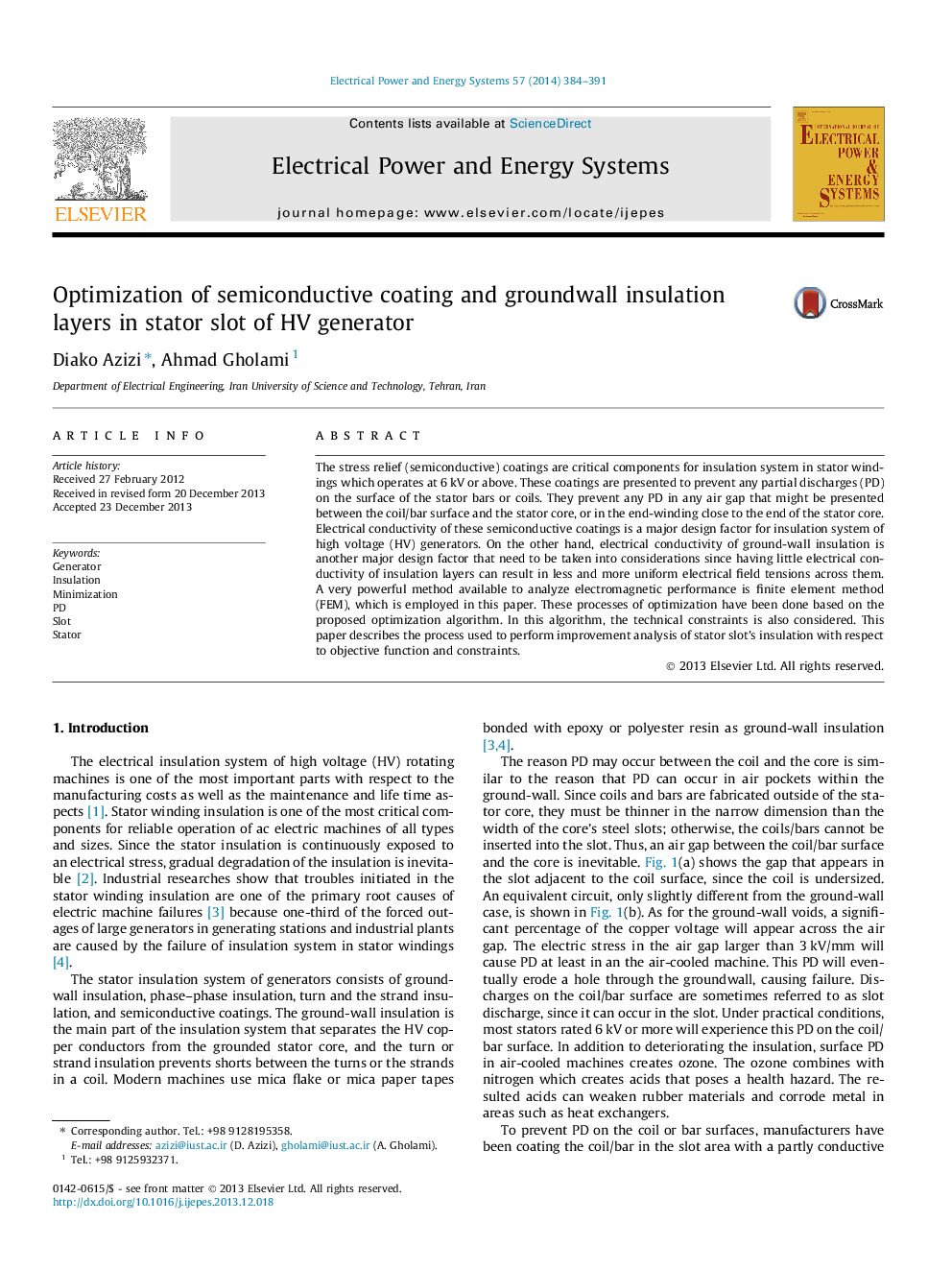| Article ID | Journal | Published Year | Pages | File Type |
|---|---|---|---|---|
| 399408 | International Journal of Electrical Power & Energy Systems | 2014 | 8 Pages |
•The used method in this research to analyze electro-thermal (ET) stresses is FEM.•The FEM optimization has been done according the proposed optimization algorithm.•So a distributed electrical conductivity for selected insulation layers has been obtained.•Semiconductive coating and groundwall insulation are the selected layers.•So, ET tensions across the stator slot insulation layers have been reduced.
The stress relief (semiconductive) coatings are critical components for insulation system in stator windings which operates at 6 kV or above. These coatings are presented to prevent any partial discharges (PD) on the surface of the stator bars or coils. They prevent any PD in any air gap that might be presented between the coil/bar surface and the stator core, or in the end-winding close to the end of the stator core. Electrical conductivity of these semiconductive coatings is a major design factor for insulation system of high voltage (HV) generators. On the other hand, electrical conductivity of ground-wall insulation is another major design factor that need to be taken into considerations since having little electrical conductivity of insulation layers can result in less and more uniform electrical field tensions across them. A very powerful method available to analyze electromagnetic performance is finite element method (FEM), which is employed in this paper. These processes of optimization have been done based on the proposed optimization algorithm. In this algorithm, the technical constraints is also considered. This paper describes the process used to perform improvement analysis of stator slot’s insulation with respect to objective function and constraints.
Graphical abstractFigure optionsDownload full-size imageDownload as PowerPoint slide
